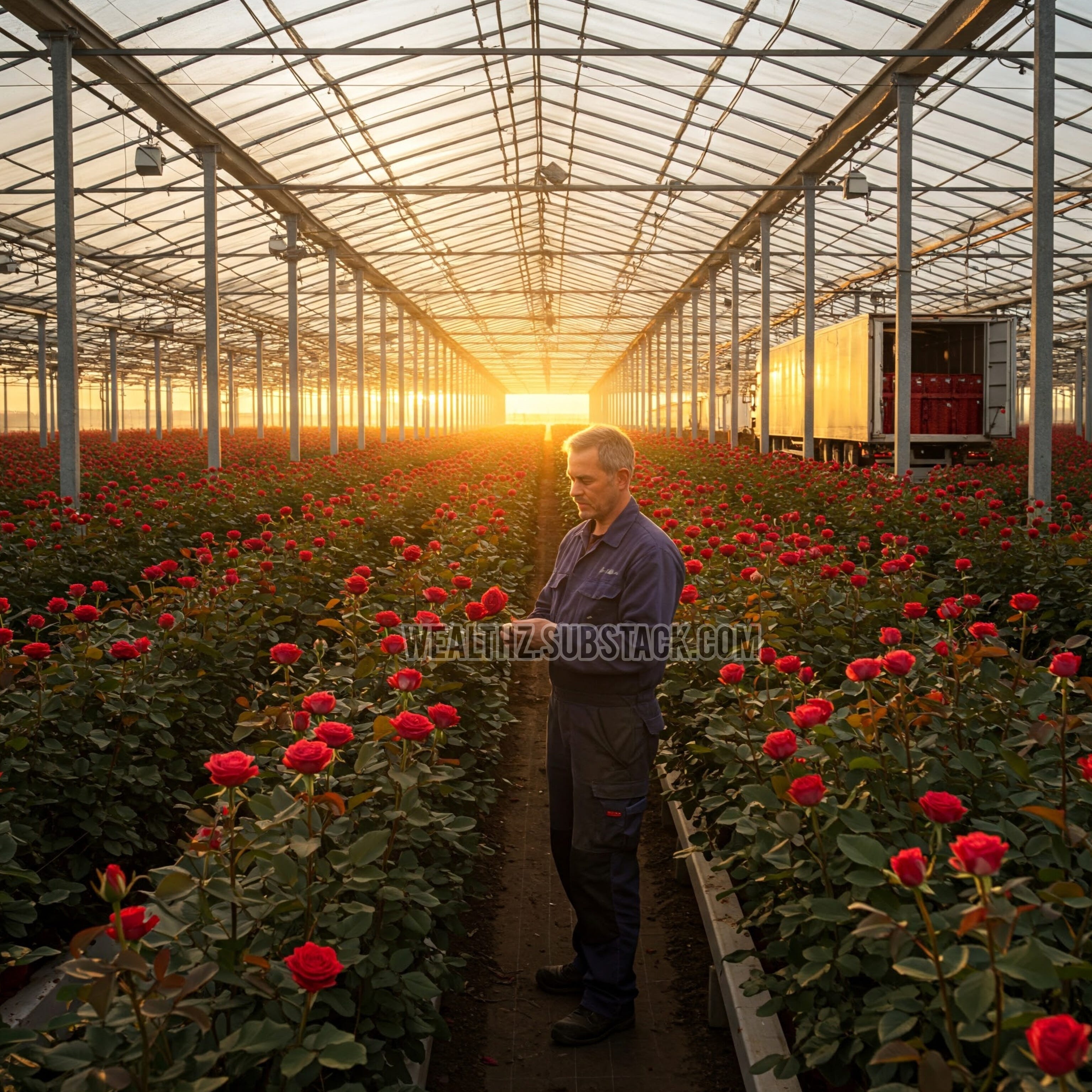Floriculture, the cultivation of flowers and ornamental plants, has blossomed into one of the most intricate and globally interconnected industries in agriculture. From ceremonial occasions to everyday décor, flowers are among the most time-sensitive and emotionally charged products traded across continents. Their journey from soil to vase is a delicate balance of science, logistics, and artistry. As of today, the global floriculture market is worth over €50 billion annually, driven by increasing consumer demand for aesthetic living, wellness, and celebrations. At the heart of this global network stands the Netherlands, a country that has cultivated not just flowers, but an entire industry ecosystem—housing the world’s largest flower auction and pioneering advancements in greenhouse technology. Among the standout names in this field is Van den Berg RoseS, a company that represents the intersection of tradition, innovation, and scale. It is not merely a supplier of roses—it is a blueprint for how floriculture can evolve without losing its roots.
The roots of Van den Berg RoseS trace back several decades to the Dutch village of Delfgauw. It was here that the Van den Berg family began growing roses in a modest greenhouse, guided by knowledge passed from one generation to the next. This wasn’t a company born out of corporate ambition—it was born in soil, through the practical wisdom of growers who understood every season, every stem. As their roses gained recognition for their quality and consistency, the farm gradually expanded. But through all the growth, one thing never changed: the Van den Berg family’s hands-on involvement.
That blend of tradition and strategic foresight is what allowed Van den Berg RoseS to grow from a local farm into a global enterprise. The company now cultivates roses on approximately 71 hectares of land between the Netherlands (16 hectares) and Kenya (55 hectares), producing around 50 million roses annually. In Kenya, farms are located at high altitudes near the equator, where the stable climate allows for year-round growing conditions with optimal sunlight and cool nights that roses love. Back in the Netherlands, their original facility continues to operate as both a production site and an innovation hub, benefiting from proximity to Royal FloraHolland—the beating heart of Europe’s flower trade. These strategic expansions allow the company to hedge against regional risks, meet seasonal demands globally, and maintain a consistent supply. But it’s not just about volume. Van den Berg RoseS cultivates a wide array of varieties—each suited to market-specific preferences. For example, long-stemmed, bold-colored roses for European luxury buyers, and softer, pastel-hued roses for the Asian market. This attention to nuance is what transforms global scale into meaningful, localized impact.
At Van den Berg RoseS, sustainability is embedded in the rhythm of everyday operations. Across all sites, rainwater harvesting systems collect and store precipitation, which is then filtered and used for irrigation. This closed-loop system not only conserves water but reduces dependency on local supplies, especially critical in regions like Kenya where water access is limited. Pest control, often a problematic issue in floriculture, is approached with biological solutions: beneficial insects like ladybugs and predatory mites are released into greenhouses to combat harmful pests. This minimizes the need for chemical pesticides, protecting both the environment and the health of workers. These practices aren’t theoretical—they are visible on the ground, in the way each site is run, in the training of staff, and in the consistent quality of the product.
Technology, too, plays a role—but not in a flashy, Silicon Valley kind of way. At Van den Berg, tech is not about optics—it’s about outcomes. Inside their greenhouses, sensor arrays constantly monitor and adjust climate conditions—temperature, humidity, and CO₂ levels—creating an optimal environment for plant growth while avoiding energy waste. These systems respond in real time, meaning less guesswork and more control. When it comes to harvesting, digital planning tools help managers schedule labor and track bloom cycles with remarkable precision. This ensures roses are cut at their peak and moved efficiently into the supply chain. In every case, technology isn’t replacing skilled growers—it’s empowering them. It allows Van den Berg to uphold their reputation for quality without compromising on efficiency.
Of course, growing perfect roses means little if they can’t reach markets in pristine condition. That’s where the company’s logistics strategy comes into play. In the Netherlands, Van den Berg’s proximity to Royal FloraHolland—the largest flower auction in the world—provides direct access to a global network of buyers. Roses harvested in the morning can be at auction by the afternoon and on their way to Paris, Dubai, or Tokyo by nightfall. This speed is made possible by a cold chain logistics system, which maintains ideal temperature conditions from greenhouse to end customer. Every link in this chain—from packing to freight to final delivery—is optimized to preserve freshness and extend vase life. It’s not just transportation—it’s temperature science, time management, and packaging precision all working in harmony. This capability allows Van den Berg to consistently serve high-demand markets with reliability, which in an industry where timing is everything, is as valuable as the flower itself.
Join us: ➡️ Instagram | Telegram | X ⬅️




